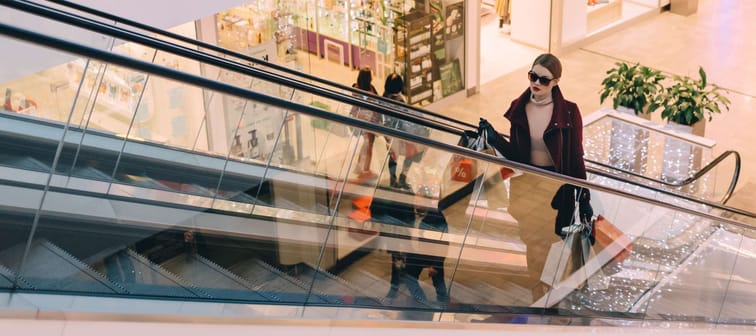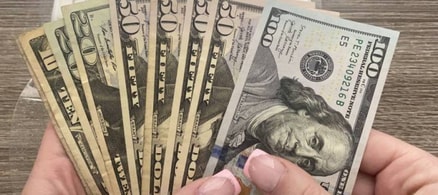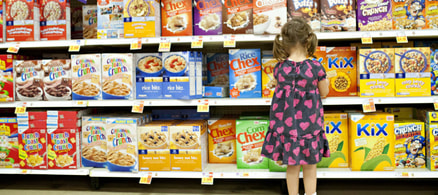You may already be falling for some of these tricks without realizing it.
“Margins are very slim in grocery business, and stores and brands have to be very aggressive to motivate consumers to move items into shopping carts,” explains Suraj Commuri, associate professor of business at the University at Albany and an expert on consumer behavior.
Here are the top ways that stores get you to spend more money — and how you can avoid falling for their sneaky tricks.
1. Clever product placement
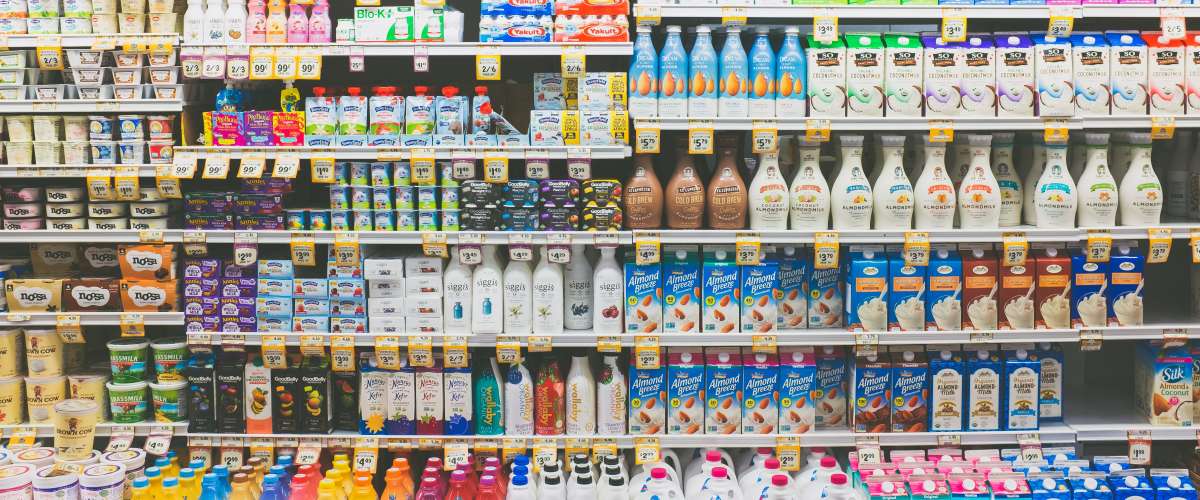
Simply put, clever product placement is designed to make you spend as much money as possible at the store.
Simply put, clever product placement is designed to make you spend as much money as possible at the store. Store designs ensure that the product layout appeals to shoppers’ physical senses, psychological needs, and of course, the most popular items on their lists.
Fruits and vegetables are usually placed near the entrance of the grocery store to give people the impression that they have chosen a healthy place to shop. If there is an on-site bakery or florist, those are usually all near the front door, too. The smell of fresh bread makes people hungry, and they become more likely to buy a lot of food.
Meanwhile, the essential products that everyone needs are typically placed at the back of the store. This forces the now hungry customers to walk through all the other aisles before they get to the dairy, bread, and cheese.
The individual shelves are designed for profit, too. For example, there might be expensive jars of organic salsa placed right next to the taco shells, which makes your shopping experience more convenient because everything you need for dinner is right in front of you. So, naturally you buy the expensive salsa.
Even when you get to the proper aisle, expensive brands are always placed at eye-level so you see them first. Even kid’s cereals are placed at a particular eye level to make kids feel as if the cartoon characters are looking directly at them, begging to be taken home. This only gets worse when cereal boxes have kid’s favorite characters, like Kellogg's new cereal with Anna and Elsa from Disney’s Frozen on the front.
Kiss Your Credit Card Debt Goodbye
Having a single loan to pay off makes it easier to manage your payments, and you can often get a better interest rate than what you might be paying on credit cards and car loans.
Fiona is an online marketplace offering personalized loan options based on your unique financial situation.
When you consolidate your debt with a personal loan, you can roll your payments into one monthly installment. Find a lower interest rate and pay down your debt faster today.
Get StartedThe solution

Eat a snack before going shopping so that you aren't hungry.
Eat a snack before going shopping so that you aren't hungry. It’s far easier to turn down extra food on a full stomach.
You also want to have a plan, Commuri says.
“Making a shopping list before entering a grocery store and sticking to it during the shopping trip has two advantages: It keeps you away from distractions; and even if you fall for any of the tricks, you still got what you wanted to start with," he says.
Remember to look down, because all of the cheaper brands are usually closer to the floor, where retailers hope you won’t see them. Convincing your kids to stay away from unhealthy cereal is hard, so you might consider just skipping that aisle when they’re shopping with you.
2. Bigger shopping carts

There’s something satisfying about walking out of the store with a full cart of groceries.
There’s something satisfying about walking out of the store with a full cart of groceries. But what most people don’t realize is that shopping carts have actually gotten bigger since at least 1975, when consumer advocate Ralph Nader first started noticing.
A handful of items doesn’t fill up a cart the way they did 40 years ago. This may subconsciously shame people into buying more. Customers see their peers walking around the store or standing in line with full carts, which makes them feel obligated to buy more, so as not to appear like they’re poor.
It’s a similar to the twinge of jealousy you might feel if you have a 20-year old car and someone else your age rolls up next to you in the parking lot with a brand new Tesla.
Stop overpaying for home insurance
Home insurance is an essential expense – one that can often be pricey. You can lower your monthly recurring expenses by finding a more economical alternative for home insurance.
SmartFinancial can help you do just that. SmartFinancial’s online marketplace of vetted home insurance providers allows you to quickly shop around for rates from the country’s top insurance companies, and ensure you’re paying the lowest price possible for your home insurance.
Explore better ratesThe solution
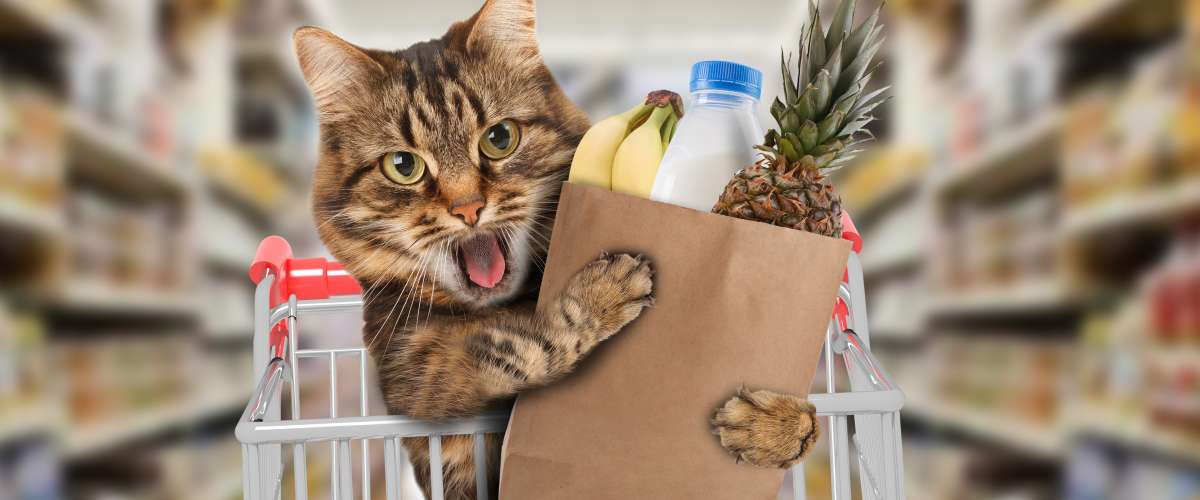
Instead of using a regular shopping cat, choose smaller cats if they’re available.
Instead of using a regular shopping cart, choose smaller carts if they’re available. Certain Supermarkets offer smaller carts that are meant just for a handful of items. You can also opt to use hand baskets, and you can bring your own reusable bag, too.
Personally, I avoid getting a cart unless it’s completely necessary. If I only buy what I can carry in my hands or shopping bag, it seriously puts a limit on what I am able to bring to the checkout counter. This forces me to only buy what is absolutely necessary.
Ditching the cart will allow you to walk through the store faster, avoid crowding the aisles, and get away from any temptation to buy more. Of course, if you have something heavy to buy, don’t hurt yourself by carrying it. Just remember that if you feel guilty about an empty cart, don’t give in. It’s how they want you to feel.
3. Pricing games

There is something about seeing the numbers .99 that tricks people into believing that they are paying less than they actually are.
There is something about seeing the numbers ".99" that tricks people into believing that they are paying less than they actually are. New York University did a study to see if an item priced at $4.99 really makes a difference in a customer’s purchase decision compared to something that is priced at $5.00 flat, and it absolutely does. They call the phenomenon the “left digit effect”.
As someone who’s worked in retail a long time, I can’t tell you how many times I’ve heard someone say, “It was $4” when they actually bought something for $4.75 or $4.99. In many cases, stores will actually drop the dollar sign on price tags as well, which takes away your association with money and makes it easier to spend.
The solution

Remember how you learned in elementary school math class that if a decimal is 5 or bigger, the numbers round up?
Start rounding up. Remember how you learned in elementary school math class that if a decimal is 5 or bigger, the numbers round up? Get in the habit of training your brain to think that way. When I go shopping, I take it one step further if I know the item will be taxed.
For example, if an item is $17.99, the store wants to trick you into thinking $17.00, but I think of it as $20. This way, I get a much more accurate estimate of what my total is going to cost when I check out. I tend to do this all the time, which means that when I buy non-taxed food items, I am pleasantly surprised when my total comes out to be less than what I added up in my head.
Unfortunately, most people have the opposite experience. When I worked as a grocery store cashier as a teenager, it was extremely common for people to fall for this trick.
Multiple times a day, people would be shocked by the total. In the best case scenario, they would jokingly say, “I don’t know how that happened.” Other times, people had to request that I void multiple items off of their order, because they had clearly rounding down instead of up and exceeded their budgets. Some people even tried to argue about how the prices did not match their estimated total, all because of the “left digit effect”. If this describes you, then it’s probably time to start rounding up.
4. Packaging ploys

Maybe you’ve seen the new miniature sized soda and beer cans in your local grocery store.
Maybe you’ve seen the new miniature sized soda and beer cans in your local grocery store. In an obesity-conscious nation, some people buy these in an attempt to lose weight while still getting to enjoy their favorite soft drinks.
Research shows that if people drink from smaller cans, they are actually likely to consume more overall because they trick themselves into feeling that they can enjoy two miniature sized cans instead of one regular sized can. This also means that customers are more likely to spend money by replenishing their supply more often.
The solution

Take the time to read the packaging and pay attention to the actual amount of food in the package you are buying.
Take the time to read the packaging and pay attention to the actual amount of food in the package you are buying.
For example, if a 12oz bag of food costs $1 and a 20oz “Jumbo Value Size” of the exact same food costs $3, it would actually make a lot more sense to buy two of the smaller bags. In this case, you’d be getting 24oz for $2 instead of 20oz for $3. This may seem like common sense when it’s written down, but in the grocery store people fall for these tactics all the time because they simply don’t take the time to read the volume of product and compare prices.
5. False sense of urgency

You know those sale price signs that say, Only while supplies last, or items that have a limit to how many you can buy while they are on sale? How do they make you feel?
You know those sale price signs that say, "Only while supplies last," or items that have a limit to how many you can buy while they are on sale? How do they make you feel? This tactic is designed to make people feel that if they don’t buy this item right now, they will never get the same deal again.
Many stores will also highlight their “10 for $10” deals instead of just advertising them as “Dollar Deals.” This subconsciously tricks people into buying more or even possibly believing that they must buy more in order to get the “sale.”
One of my local grocery stores constantly puts up "4 for $4" signs for a particular brand of beans — while they sell the identical product for 99 cents in the other aisle. How many people buy 4 cans of beans instead of the 1 or 2 they need just to get this "deal"?
The solution

While it’s true that some items go on sale more often during certain times of the year, remember that sales go in cycles.
While it’s true that some items go on sale more often during certain times of the year, remember that sales go in cycles. For example, January is the month when people make their New Year’s resolutions and often have fitness on their minds. That makes this time of year the best for stocking up on deals on vitamins and foods that are marketed to dieters.
Also, when it comes to the 10 for $10 sale, think: if you saw the same item for $1 at Dollar Tree, would you stock up on it? If the answer is “no,” then you’ve just recognized the marketing scheme.
Products sell because of either pull or push, Professor Commuri says.
"Pull is when consumers come looking for it. Push is when marketers must get in the way of consumers to be noticed," he says. "Anytime consumers notice something on sale, they simply have to ask themselves: Would a company give it away for less if we really wanted it anyway?”
6. Slow music

Calming music has been shown to slow shoppers down even if they don’t consciously notice the music at all.
According to the American Marketing Association, playing smooth, calming music has been shown to slow shoppers down even if they don't consciously notice the music at all.
This sense of calm encourages people to take their time and look more at products instead of rushing out of the store with what they need. One study showed that simply turning music on increased a store’s revenue by several thousand dollars.
The solution

Next time you walk into a grocery store, pay attention to the music.
Next time you walk into a grocery store, pay attention to the music. Once you’ve acknowledged that it’s there, it becomes easier to avoid letting it slow you down to browsing speed.
7. Coupon machines

Lots of grocery stores have little red coupon machines that spit out discount coupons specifically for new products.
Lots of grocery stores have little red coupon machines that spit out discount coupons specifically for new products. This can be a real temptation urging you to try an expensive new item simply because you have a coupon. However, not all coupons are created equal. According to a study by New York University, customers who use a one-time coupon will pay more than someone who finds a lower priced product without any coupons at all.
The solution

Never use coupons at random.
Never use coupons at random. Before you go on shopping, look through your local grocery store’s weekly sales ads to see which brands are on sale. Next, find coupons for those brands on Coupons.com. Only use coupons on items that you are totally confident that you are saving money.
Sponsored
Follow These Steps if you Want to Retire Early
Secure your financial future with a tailored plan to maximize investments, navigate taxes, and retire comfortably.
Zoe Financial is an online platform that can match you with a network of vetted fiduciary advisors who are evaluated based on their credentials, education, experience, and pricing. The best part? - there is no fee to find an advisor.
